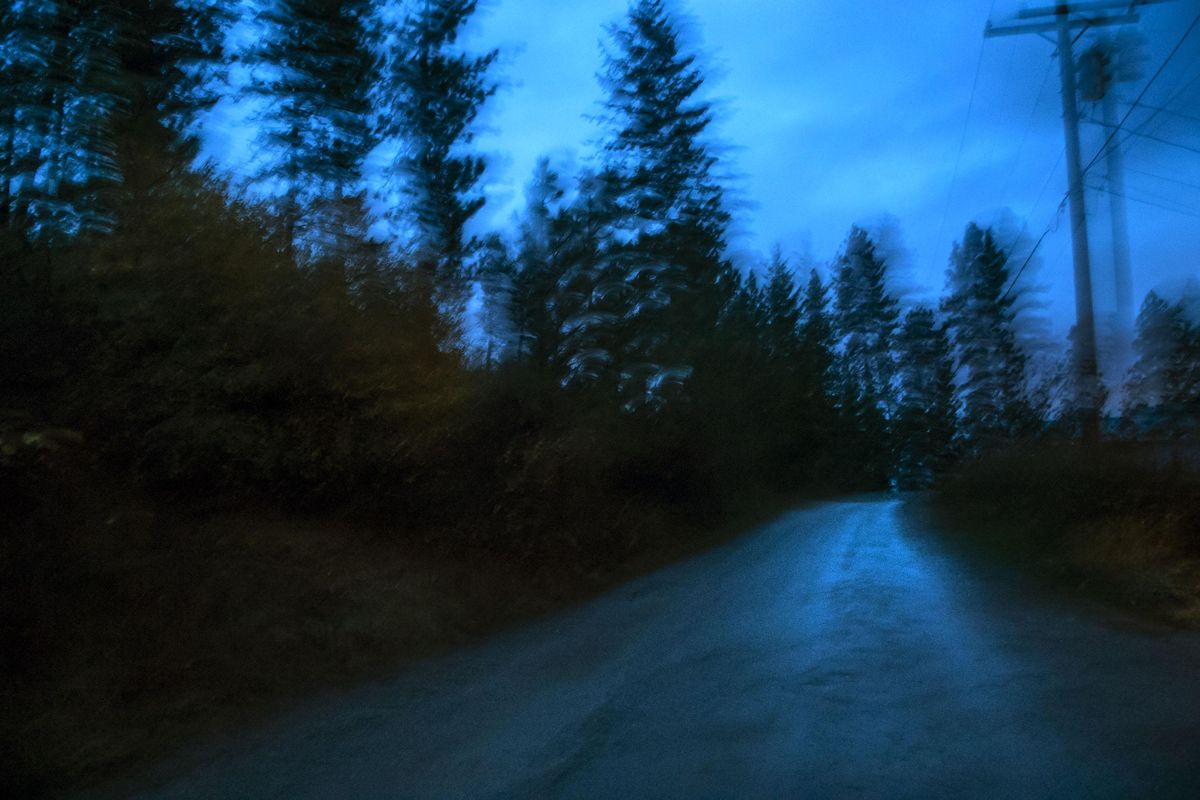About a third of people drawn to adrenalin rush of scary movies, researcher says

T.J. Tranchell watched his first Dracula movie at the tender age of 5.
He still remembers the terror he felt when a female vampire ambushed two of the main characters in the 1979 film adaption of Bram Stoker’s classic novel.
“They’re down in the catacombs and the vampire comes after them. She’s all in white, with big fangs,” Tranchell said. “I had nightmares about that scene.”
It was fear, but a good kind of fear, said Tranchell, who became a fan of horror flicks. His mom worked at a video store, so the Moscow, Idaho, resident had plenty of opportunity to watch scary movies when he was growing up. As an adult, Tranchell still indulges in films and books designed to instill fear.
Some of us are drawn to horror films. We crave moments of suspense and hair-raising events that make our heart pound, our muscles tense, our palms sweat and our blood pressure shoot up. We count scenes from “The Shining” or “The Texas Chainsaw Massacre” among our favorite moments in film.
Why do we like to be scared? The answer has roots in how certain personalities respond to adrenaline-charged situations, said Glenn Sparks, a professor at the Brian Lamb School of Communication at Purdue University, who studies the effects of frightening films and TV programs.
About one-third of the people Sparks surveys say they seek out scary movies and related entertainment, such as haunted houses. More men than women fall into this group.
“That adrenaline rush is something these people enjoy,” Sparks said. “They’re sensation seekers. They may be biologically predisposed to seek out this kind of experience, whether it be a horror film or jumping out of airplanes.”
Another third of the people he surveys strenuously avoid scary entertainment, and the remaining third say they enjoy it occasionally.
Watching a horror film or visiting a haunted house creates physiological effects – a faster pulse, higher blood pressure and increased respiration – that linger after the movie or the haunted house tour ends, Sparks said. The aftermath of the adrenaline rush increases the intensity of the feelings that follow the fear, Sparks said. Someone who watches a horror film with friends and then goes out for an enjoyable dinner with the group will have a heightened feeling of pleasure, he said.
“There’s kind of a misattribution,” he said. “They didn’t enjoy being scared, but they remember the positive experience afterward that was intensified by the fear. So they think, ‘I like being scared.’ ”
In other instances, people feel a sense of achievement for making it through a film hyped as particularly gory or disturbing, Sparks said.
Back in the 1970s, when “The Exorcist” was a box office hit, there were reports of people fainting and vomiting while watching the film about a young girl possessed by a demonic presence.
“Many people couldn’t get through it,” Sparks said. “About six people were hospitalized because it was such an intense emotional experience.”
Moviegoers who watched the entire two-hour film could brag to friends and acquaintances about their ability to stomach the disturbing scenes.
“People get gratification out of being able to say, ‘I faced my fears, and I came out OK,’ ” Sparks said. “There’s a conquering idea here. It’s not unlike looking at a tall roller coaster and being able to say, ‘I rode that thing.’ ”
This effect might be particularly true for males, who are socially conditioned to face and master their fears, Sparks said.
But not everyone conquers their fear. Some scenes are so realistic to viewers that they trigger a lingering fear response.
“I’ve interviewed 40-year-old men who still cannot go back and watch the tornado scenes in the ‘Wizard of Oz.’ It conjures up fears of tornadoes in their own lives,” Sparks said.
“After ‘The Exorcist,’ there were people who were so terrorized by the film they said the bed the little girl slept in reminded them of their own bed.”
Sparks also urges parents to be aware of how scary scenes affect their children. While young children tend to be more frightened by scary-looking characters, older kids are often scared by situations they think could happen to them.
Tranchell, the horror movie buff, said it was his decision to watch Dracula as a youngster. His mom realized he was drawn to the genre, and watched the movies with him during his childhood. It took him multiple times of viewing Dracula to watch all the scary scenes, he said.
Tranchell, 36, now works at the University of Idaho as the adviser to the student newspaper, radio station and other publications. His background includes a birthday that falls on Halloween and a first job as a teenager working as a monster in a Haunted Forest. He writes a horror-themed blog, warning-signs.net, and recently published a novel with a ghost story, “Cry Down Dark.”
People seek out the dark, the terrifying and the macabre in literature, movies, haunted houses and video games for good reasons, Tranchell said. Watching or reading about fictitious events allows people to confront their fears in a safe setting.
“The ultimate satisfaction is that we all come out OK,” he said. “The likelihood of someone hurting you in a haunted house is very slim. … You can be scared while knowing that you’re safe.”
Good usually triumphs over evil in horror films, which also satisfies audiences. But story lines often leave room for evil characters’ future return.
“Even if the bad guy gets it in the end, there’s still a good chance he’ll come back for a sequel,” Tranchell said. “In horror, no bad guy is dead forever.”